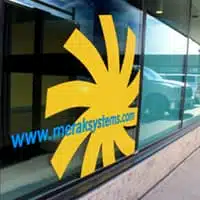The Challenge
A client was administering a program to over 25,000 participants. They required technical support to develop processes and systems to effectively manage the program. One area in particular that required attention was the creation of a document management system to hold, categorize and process participant documentation.
The Solution
Due to MERAK’s development expertise, successful track record and long-term relationship with the client, we were selected to develop the new document management system. We determined that the document repository should be built on SharePoint and connected to the program database. All documents go through a scanning process before being posted to the repository. Barcode reading technology is used by design to determine information on application forms; such as customer number and other personal information. Other key defaults like date received and status of the document are set automatically. Even though the majority of metadata is added automatically, miscellaneous correspondence/data can be keyed manually. Workflows were developed to initial benefit processing, inform staff and update a document’s status.
During the analysis of the project, MERAK determined that the document management system needed to be fully assimilated into the client’s systems. Using knowledge of both SharePoint and complex database systems, we developed custom programming to seamlessly integrate the scanning/barcode reading system, the SharePoint repository and the administration systems. This created consistent end-to-end document management, allowing users to locate all participant information using one interface. Using workflow procedures benefit processing and updates are automatically triggered.
The Benefit
Using our custom development and the integration of SharePoint the client experiences the following benefits:
- Informed staff, as the system alerts them when a document has been revised and the status is updated.
- Reduced costs by eliminating manual interventions and streamlining procedures.
- Increased efficiency and accuracy for benefit processing, as documentation is accessible and appropriately categorized.
- Avoided inefficient stand-alone systems as the document management and benefit processing systems have been assimilated.
Last Updated: June 25, 2025



